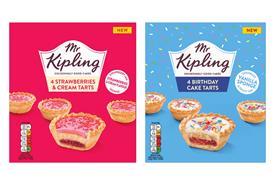Jam, marmalade and honey producers are spreading something new: the health message. This recurring and growing theme is driving the honey market in particular, but even the marmalade sector is exploiting it.
The honey that is flavour of the month is manuka, which comes from bees working in manuka bushes in New Zealand and, according to the Honey Research Department at Waikato University in New Zealand, has antibacterial and wound-healing properties. The department says that, while there is evidence that all honeys are antibacterial, manuka honey is the only one commercially available that is actually tested for its efficacy. Duerr's is using this legitimising of traditional claims by using manuka honey in its new manukalade, a mixture of traditional mamalade and honey.
The pure honey market is in significant growth, largely on the back of the health claims for the product. Industry research shows value has risen 28% in three years to £62m in the year to June 2006 and has an annual growth of 7.3%. Honey is the fastest-growing sector in the spreads category and accounts for 22% of sales.
The largest honey brand, Gale's, which has a £7m share of the market, is planning a relaunch of its product range in the autumn in an attempt to add new life to a spreads market that is static at £282m.
Gale's says it has identified increasing consumer sophistication as an element driving the market with buyers seeking more premium products.
Wilkin & Sons says it has also noted a trend for consumers to buy more expensive branded honeys, a trend that started with the ban on UK imports of Chinese honeys in 2002.
The trend towards premium products is also seen in other areas. Whole Earth Foods is launching a range of all-organic, no-added-sugar fruit spreads to meet demand for higher-quality products and is conscious of the over-arching health theme, too.
Senior brand manager Melanie Dean claims the company invented the concept of fruit spreads with no added sugar. "Consumers like what we do because it's indulgent but without the added sugar."
Despite honey gaining ground, jam is still the largest sector, accounting for a 35% share of the market. The healthy jam sector is driving sales: reduced sugar jams are showing the fastest growth, having grown by 120% between 2000 and 2004, according to Mintel.
Traditional raspberry and strawberry remain the favourite varieties, although companies are seeking to innovate. For instance, Tiptree claims to be the only commercial grower of the Little Scarlet berries that are used to make its Little Scarlet conserve. n















No comments yet